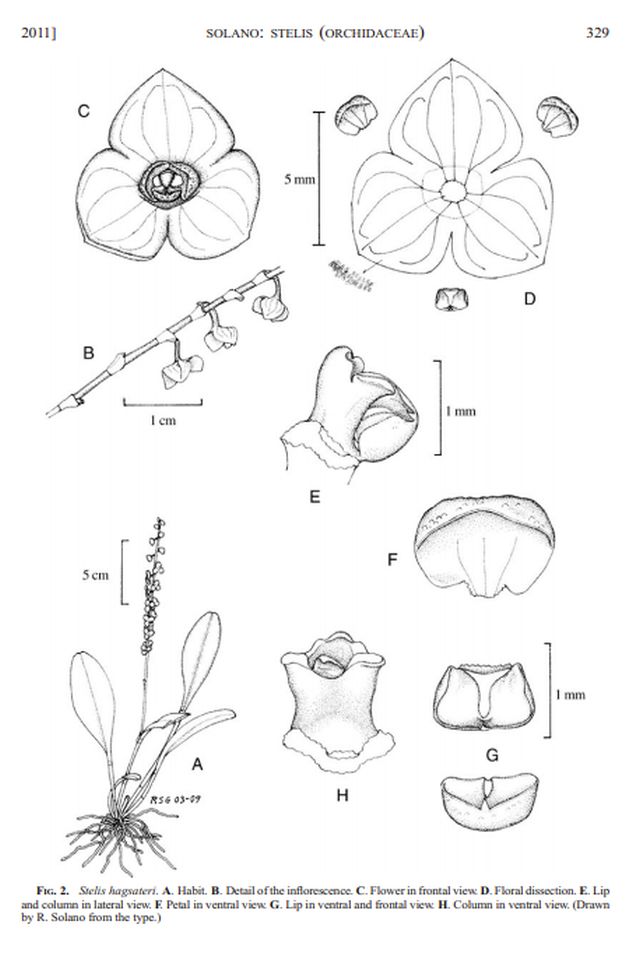

Stelis hagsateri Solano 2011 SECTION Stelis Common Name Hagsater's Stelis [Mexican researcher and Epidendrum expert current]
Flower Size .32" [8 mm]
Found Chiapas state of Mexico from the slopes of the Tacana volcano in coffee plantations atelevations of 800 to 1000 meters as a small sized, warm growing, caespitose epiphyte with erect, straight, terete, 2 internoded ramicauls enveloped almost completely by narrow, scarious, tubular, obtuse, carinate, mucronate sheaths and carrying a single apical, erect, fleshy, elliptic, rounded, emarginate apically, with a minute mucro between the lobes, attenuate below into the lightly conduplicate, petiolate base leaf that blooms in the summer and fall on an erect, arising through a thickened, scarious, conduplicate, triangular, acute, shortly apiculate, carinate annulus, racemose, peduncle 3 to 3.52" [7.5 to 8.8 cm] long, provided with 4, tubular, adpressed, oblique, obtuse, shortly apiculate bracts, longer than the leaf, to 8" [20 cm] long, producing new inflorescence over years, subcongested, secund, simultaneosuly many flowered inflorescence with funnel-shaped, narrow, membraneous, oblique, broadly obtuse apically, apiculate, carinate, just shorter than the ovary floral bracts and carrying greenish-yellow, secund flowers.
"This species is another member of the
Stelis argentata
complex, a group that shares great similarity in the morphology of the central apparatus composed of the petals, lip and column (Solano, 1993; Duque, 2003; Soto Arenas et al., 2007).
Stelis hagsateri
is distinguished by its greenish-yellow
flowers,with sepals that are slightly overlapping along their margins and minutely glandular-papillose on the adaxial surfaces. This species is sympatric with
S. annedamoniae, however the yellow-greenish
flowers (vs. red-wine) andthe glabrous sepals (vs. glandular-papillose) distinguish
S. hagsateri. The type locality of this species was found in a patch of primary tropical rain forest that was devastated by hurricane Stan in 2005. During recent years this habitat has been severely disturbed and transformed into coffee farmsa nd pasturelands; currently it persists only as small and isolated fragments in deep ravines. There are no protected areas with tropical rainforest in the Tacana volcano region." Solano 2011
Synonyms
References W3 Tropicos, Kew Monocot list , IPNI ;
* Brittonia 63: 326 Solano 2011 drawing fide;
--------------------------------------------------------------------------------------
--------------------------------------------------------------------------------------------------------------------------



